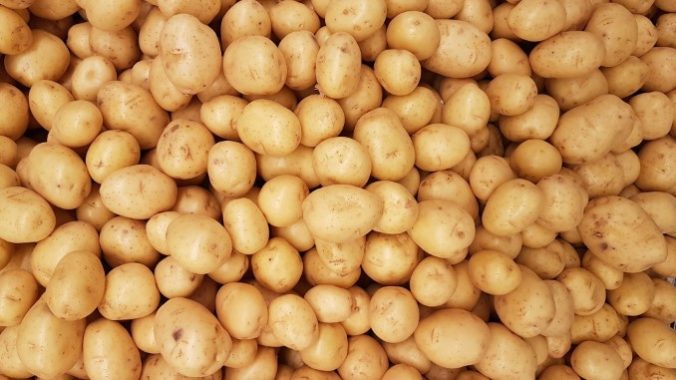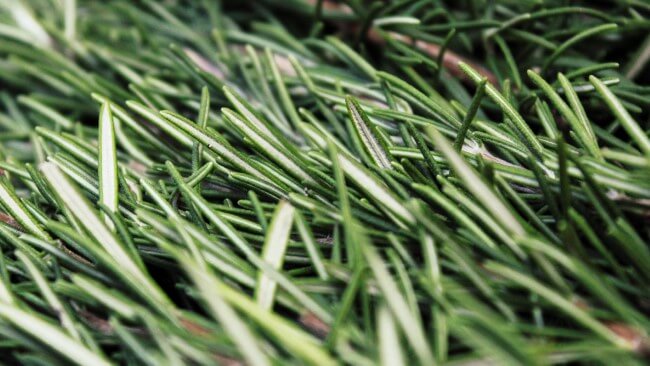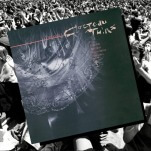You Want Genuinely Great Mashed Potatoes? Then Accept the Gospel of Butter and Cream
Photo via Unsplash, Rodrigo dos Reis, Tijana Drndarski, Fulvio Ciccolo
Most of us who enjoy cooking have at least some understanding of one of the universal truths of “home-cooked” vs. restaurant meals, which is the following: Your restaurant dish probably tastes so great because “health” was not taken into consideration when crafting it. Unless calorie counts are a selling point for a restaurant, they are in fact incentivized toward food that one’s cardiologist probably wouldn’t be happy to see, and the simple reason is that these preparations TASTE BETTER, which shouldn’t be surprising to learn. It also accounts for why home cooks’ attempts to replicate “restaurant-style” dishes at home are so often underwhelming—we consciously or subconsciously undercut ourselves out of feelings of guilt, or a desire to be healthier, until the attempt to replicate a restaurant dish has been rendered bland or vapid in the process.
With Thanksgiving on the immediate horizon, then, I was struck by how often mashed potatoes fall into this camp. They’re an essential Thanksgiving dinner staple, but they’re simultaneously a dish that many, many home cooks make quite poorly, or blandly. Sometimes, it’s as elemental as starting with the wrong type of potato, but in my experience far more cooks produce boring mashed potatoes because they’re afraid to commit to the level of decadence that this side dish actually demands, namely in the departments of butter, cream, salt and additional flavorings. Still other cooks have a mistaken idea of what the ideal mashed potatoes should probably be like in the first place, so let’s talk about that for a moment before we share a wide array of tips to make the best goddamn mashed potatoes of your life for this Thanksgiving.
What Makes for Great Mashed Potatoes?
We first need to answer the following question: What kind of experience are we trying to replicate here? When you get delicious mashed potatoes from a restaurant, why are they so great, and how would you actually describe them?
This is one place we fall into a pitfall, and a widespread misunderstanding, especially when it comes to texture. It mostly comes down to a mistaken idea that one should be able to describe mashed potatoes as “light” or “fluffy.” THIS IS A TRAP, one instituted by cookbook authors and health advocates in an effort to promote healthier eating.
Suffice to say, the best restaurant potatoes aren’t “fluffy,” and they certainly aren’t “light.” One can certainly make potatoes with these textures, but you’d be doing so by using less flavorful potatoes for the job in order to achieve the lighter texture, and by using much less butter/cream/milk, and whipping as much air into the potatoes as possible. The result would be something qualifying for “fluffy,” but those potatoes will almost by definition be more bland and soulless than a delicious dish you’d have in a restaurant. These kinds of potatoes may actually be quite familiar to you, because there’s a good chance that this is what mom or grandma made every year—big bag of russetts, not nearly enough butter, cream or salt—classic American bland mashed potato side.
This is what we want to avoid, because a much more accurate word to describe great restaurant mashed potatoes is typically “creamy.” Really good mashed potatoes are much more rich and decadent than those “fluffy” potatoes, and the way to richness is more fat, which we’re getting from butter and cream. This simultaneously results in a more dense, creamy texture. Does this make the potatoes more heavy and filling? It absolutely does, but that’s what great mashed potatoes are, a decadent and indulgent treat. That’s the first thing you need to accept, to make great potatoes at home—these can’t be made into a health food item, and the desire to make mashed potatoes more healthy is antithetical to making them in the first place. And that’s not even broaching the topic of gravy, which is another rabbit hole we won’t get into here.
Another aspect home cooks too often overlook is additional flavorings. You can make mashed potatoes just fine with nothing more than butter, cream and salt, but next-level potatoes include the deft use of other flavors. Again, we don’t want to be afraid of flavor here, so the potatoes we’ll be making below are alive with garlic, rosemary and pepper in particular.
The Components of Great Mashed Potatoes
Here’s a step-by-step guide to the actual ingredients we’ll use in making great, restaurant-style mashed potatoes.
The potatoes: I know that your mom or your grandma used classic, Russet potatoes for this, and that’s fine. They do naturally produce mashed potatoes with a lighter texture, and their flesh is less dense. But it’s also less flavorful than the denser and more naturally creamy and buttery flavor of the Yukon Gold potato. There’s a good reason why so many upscale restaurants use these potatoes to make a side dish, rather than Russets—they’re just more satisfying. Make the exact same recipe with these two potato types, and the Yukon Gold dish will win your family’s blind tasting.
Cream: When I say cream, I mean cream, not milk. Milk has no place in a restaurant-caliber mashed potatoes recipe, unless it’s being used at the very end to loosen up a mixture that is too thick or stodgy. It can’t even be fully expressed how much better the potatoes are that are made with whipping cream or heavy cream, compared with those made with 2% or (shudder) skim milk. Fat is flavor, and cream is they key to incorporating that fat in your mashed potatoes. You’ll need to use significantly more of it than you’re probably expecting to use—so much that you may think the potatoes are too liquid-y, but they’ll firm up dramatically as they cool.
Butter: It’s butter. It’s necessary. Please use it. Use a lot of it. Of note: It’s best to add butter while cold, which is easiest to do if you cut it up into chunks or pats and then stick it back into the fridge until it’s time to use. Combined with hot potatoes and hot cream, cold butter will yield the best emulsion, and the smoothest, creamiest mashed potatoes.
 Garlic actually mashes really well right alongside your potatoes.
Garlic actually mashes really well right alongside your potatoes.
Garlic: Fresh garlic is a great bedfellow with decadently creamy mashed potatoes, and you have a few options for incorporating a head of garlic in delicious ways. You could certainly roast it, and mash the roasted cloves into the potatoes. An even easier way, though, is to peel and cut up a sizeable quantity of garlic cloves, and throw them right into the pot of boiling water alongside the potatoes. They’ll cook through and become tender alongside the potatoes, and will then mash right alongside them, becoming evenly incorporated. This yields a delicious but mild garlic flavor throughout, which you can amplify if desired with small amounts of additional granulated garlic while mashing.
Salt and pepper: It should come as absolutely no surprise that salt is extremely vital for great-tasting mashed potatoes. And as when you’re making pasta, proper seasoning starts with the water for boiling your potatoes. This pot of water should be highly seasoned, which will allow the salt to penetrate your potatoes while you’re cooking them. Failing to salt the boiling water adequately is like making pasta in unsalted water and then trying to catch up with the sauce. Pepper, on the other hand, is a matter of taste. Some old-school mashed potato recipes sought for perfectly unblemished, white potatoes, so they recommended the more earthy flavor of white pepper rather than the classic sharpness of black pepper. I don’t mind the aesthetics of black flakes, though, so I simply pepper liberally before mashing, and then to taste afterward.
Herbs: It’s really nice to have an herbal component in these mashed potatoes as well, with thyme or rosemary being particularly popular. I like the resinous, savory character of rosemary in these, which you can incorporate right at the time of mashing. Note, however, that it’s best to pick/strip the fresh rosemary leaves and chop them quite finely before incorporating them. Not only does this help spread the flavor of rosemary throughout the potatoes when mashing, but it allows the residual heat of the potatoes to soften those little bits of rosemary so they don’t become textural distractions. If you leave the rosemary in large pieces, it’s likely to remain too tough/fibrous, and people will be spitting the pieces out onto their plate.
 Chewing on an entire piece of rosemary isn’t particularly pleasant, so give these a pretty fine chop.
Chewing on an entire piece of rosemary isn’t particularly pleasant, so give these a pretty fine chop.
A Restaurant-Grade Mashed Potatoes Recipe
So with all that said, let’s actually making these freaking potatoes.
— 2 lbs Yukon gold potatoes, peeled and quartered (or into eighths)
— 4-6 cloves of garlic
— 1.5 cups heavy cream
— 1 stick cold butter, cut into pats and kept cold in fridge
— Several TBSP rosemary, finely chopped
— Salt and pepper
1. Bring a pot of heavily seasoned water to boil. Peel Yukon gold potatoes and quarter them. Peel garlic cloves and cut each into a few smaller pieces. Place potatoes and garlic into the boiling water and cook until fork tender. Do not pull potatoes out too early; they need to be completely tender when they come out of the water.
2. Bring heavy cream to simmer in a saucepan, while potatoes are boiling.
3. Drain potatoes, then transfer back to cooking pot. Add rosemary, pepper, and half of the heavy cream and butter. Mash the potatoes while they’re still hot, slowly adding more of the cold butter and hot cream. Note: You are trying to achieve a thick, creamy, velvety smooth consistency here, and one of the keys is to make the potatoes more liquid than you’re expecting by adding enough cream. When you look at the potatoes in this stage, you’ll probably think that look too liquid-y, almost soupy. However, they will thicken dramatically as the mixture cools down, ending in the thick and creamy texture that is desired. Be ready to add more hot cream (or milk, in a pinch) to adjust the texture if the potatoes seem too thick when they begin to cool.
4. Check for seasoning. Add salt as needed, and pepper as desired. Then sit back and enjoy these decadent, luxuriantly creamy mashed potatoes, bursting with buttery garlic and rosemary flavor.
Follow these steps, and you’ll probably never attempt to make “fluffy” Russet mashed potatoes again, unless you’re on a health kick. Suffice to say, these mashed potatoes aren’t a diet aid. What they are, is delicious, and that’s what the Thanksgiving season actually demands.
Jim Vorel is a Paste staff writer and resident genre guru. You can follow him on Twitter for much more drink, food and film writing.







































